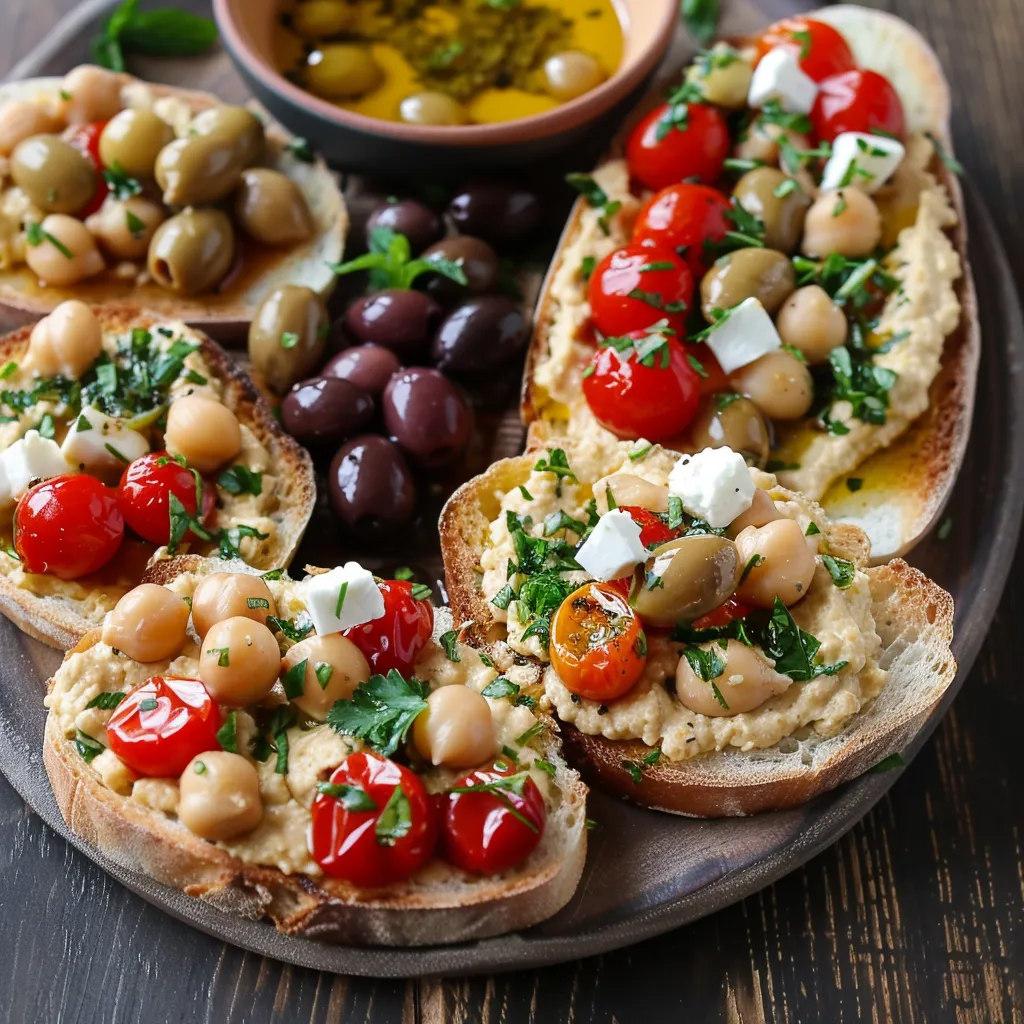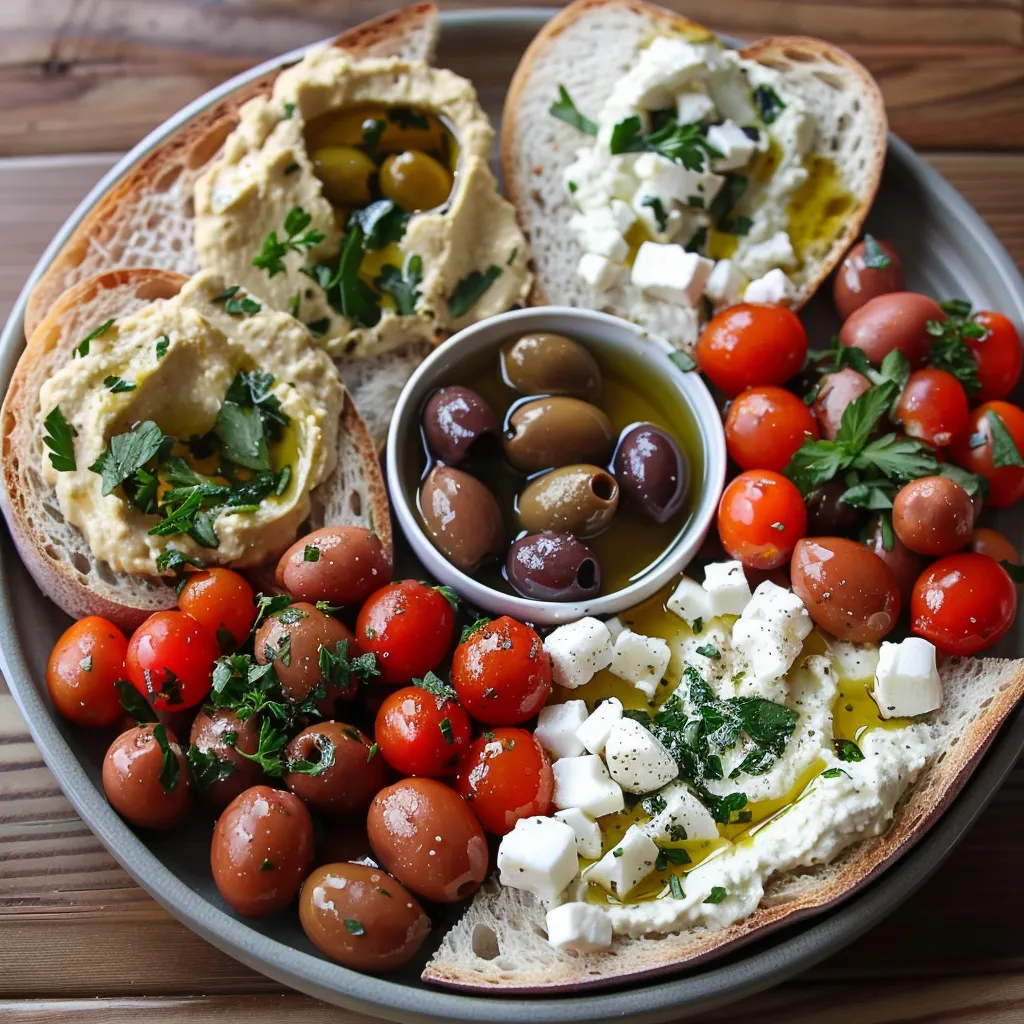 Pin it
Pin it
This hearty collection of Mediterranean-inspired appetizers brings the flavors of coastal Europe and North Africa right to your home kitchen. These recipes showcase the region's emphasis on fresh ingredients, healthy fats, and bold seasonings that create dishes as nutritious as they are delicious.
I first discovered these recipes while hosting a summer gathering where several guests had different dietary needs. These Mediterranean appetizers were the unexpected stars of the evening, with everyone repeatedly returning to the table for more of the hummus and tzatziki.
Ingredients
- Chickpeas: Foundation for multiple recipes providing plant-based protein and fiber
- Extra virgin olive oil: Authentic Mediterranean flavor carrier with heart-healthy monounsaturated fats
- Fresh herbs: Like mint, dill, and thyme bring brightness and distinctive regional character
- Greek yogurt: Creates creamy texture while adding protein and probiotics
- Feta cheese: Delivers tangy saltiness authentic to Mediterranean cuisine
- Tahini: Sesame paste that adds nutty richness and essential minerals
Step-by-Step Instructions
- Prepare the Classic Hummus:
- Process chickpeas with tahini until roughly broken down, about 30 seconds. Add lemon juice, garlic, and spices, continuing to blend while slowly drizzling in cold water. The water is crucial for achieving that silky smooth restaurant-quality texture without adding extra oil.
- Create the Tzatziki:
- Properly drain the cucumber by grating it, then wrapping in a clean kitchen towel and squeezing firmly to remove excess moisture. This prevents your dip from becoming watery later. Combine with thick Greek yogurt and seasonings, allowing flavors to meld in the refrigerator for at least 30 minutes before serving.
- Roll the Dolmas:
- Work with grape leaves one at a time, placing them smooth side down. Position a tablespoon of filling near the stem end, fold the sides inward, then roll tightly from the stem end upward. Pack them closely in your steamer to prevent unraveling during cooking.
- Assemble the Greek Bruschetta:
- Toast the baguette slices until golden brown but still slightly chewy in the center. Allow the tomato-feta mixture to sit for 10 minutes before topping the bread to develop flavors and allow the olive oil to absorb the herb seasonings.
The roasted chickpeas have become my absolute favorite snack to keep on hand. I discovered their versatility when my nephew visited with unexpected dietary restrictions. Not only did he love them plain as a protein-packed snack, but they also became a crunchy topping for our salads and soups throughout his visit.
Making Ahead and Storage
The beauty of Mediterranean appetizers lies in their ability to develop flavor over time. Hummus, tzatziki, baba ganoush, and muhammara actually improve after resting in the refrigerator for 24 hours, allowing the garlic and herbs to fully infuse. Store these dips in airtight containers with a thin layer of olive oil on top to prevent oxidation. Most will keep fresh for 4-5 days refrigerated.
For crispy items like roasted chickpeas, cool completely before storing in a paper bag rather than plastic to maintain their crunch. The stuffed grape leaves can be made up to three days ahead and stored in the refrigerator with a little olive oil drizzled over them to prevent drying out.
Serving Suggestions
Create a stunning Mediterranean mezze platter by arranging several of these appetizers together. Start with a large board or platter and place bowls of dips strategically around it. Fill in spaces with warm pita triangles, cucumber slices, bell pepper strips, and cherry tomatoes. Add olives, small chunks of feta, and a handful of fresh herbs as garnish.
For entertaining, consider temperature variety by serving the grilled halloumi warm alongside the chilled dips. This contrast creates a more interesting experience for guests. A light, crisp white wine like Assyrtiko from Greece or a rosé from Provence makes the perfect accompaniment.
Mediterranean Food Culture
The Mediterranean approach to appetizers reflects the region's social dining culture. These small plates, known as mezze in the eastern Mediterranean, are designed for sharing and conversation. Traditionally, they're served at a leisurely pace, encouraging diners to relax and connect over food.
Many of these recipes date back centuries and showcase the region's historical trade routes through their ingredients. The chickpeas in hummus originated in the Middle East, while the yogurt in tzatziki reflects the influence of nomadic cultures. These recipes demonstrate how Mediterranean cuisine has evolved through cultural exchange while maintaining its focus on fresh, seasonal ingredients.
 Pin it
Pin it
Frequently Asked Questions
- → What are popular Mediterranean appetizers?
Popular Mediterranean appetizers include hummus, tzatziki, dolmas, baba ganoush, and grilled halloumi cheese.
- → What ingredients are common in Mediterranean dishes?
Common ingredients include olive oil, garlic, lemon juice, fresh herbs, chickpeas, yogurt, and feta cheese.
- → How do you make classic hummus creamy?
Blend chickpeas, tahini, lemon juice, garlic, and olive oil, adding cold water slowly for a smooth texture.
- → What is the best way to grill halloumi cheese?
Brush halloumi slices with olive oil and grill for 2 minutes per side until golden brown and crispy.
- → How can I serve Muhammara dip?
Serve Muhammara with warm pita bread, fresh vegetables, or crackers as a flavorful dipping option.
